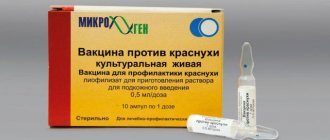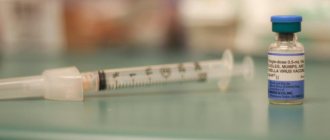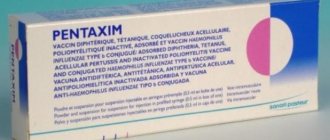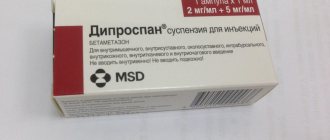For a long time, people have tried to fight infections that have claimed hundreds of lives. Through trial and error, humanity came to the invention of vaccine prevention. This path was long, difficult, but nevertheless successful.
With the invention of vaccines, the number of deaths from serious diseases has decreased significantly. The procedure was constantly changing. The first vaccinations were a real experiment. Things didn't always go according to plan. Brave souls who decided to administer vaccines sometimes died.
The drugs were constantly changing, the compositions were improved, so that the body could tolerate immunization without consequences. Today, vaccinations can protect against many infections. Vaccination is carried out as planned or urgently. Drugs are administered in different ways, most often through injections (intramuscular, subcutaneous or intradermal) or drops (orally). Injections can be placed in different places, depending, as a rule, on the age of the patient. One of the methods of administering the vaccine is vaccination under the shoulder blade, when the corresponding agent is injected under the skin. Similar injections are indicated for children after one year and for adults.
What kind of vaccination is given under the shoulder blade?
Vaccines injected into the area under the shoulder blade include:
- DTP or ADS - protection against diseases such as whooping cough, diphtheria and tetanus;
- CPC – complex against rubella, mumps and measles;
- from influenza, encephalitis, hepatitis B.
Older people are often offered the shingles vaccine.
What is the name of the vaccination under the shoulder blade at 14 years old?
At the age of 14, according to the regulations of the National Vaccination Calendar, revaccination against several infections is carried out. Pupils of general education institutions receive injections directly in the school medical office. This occurs provided that the parents have signed consent for their child to be vaccinated. Otherwise, the teenager is not allowed to participate in the procedure, just as if there is a medical outlet. In the absence of contraindications, a vaccine injection can be given free of charge in the clinic to which the patient is assigned, or in a paid clinic that has the appropriate permit.
At the age of 14, adolescents are recommended to be immunized against:
- hepatitis B;
- rubella. The infection is scary for pregnant women, as it can provoke the development of severe defects in the fetus or its death, so it is better for girls to be vaccinated in adolescence;
- mumps. Popularly, “mumps” is an infectious disease transmitted by airborne droplets and is extremely contagious. There have been cases where entire classes were placed under quarantine. The disease is especially dangerous for boys as it can cause infertility;
- tuberculosis. The disease is caused by Koch's bacillus; BCG is given to a child in the first days after birth; adolescents need revaccination. Anti-tuberculosis revaccination cannot be neglected. Some frightening statistics - every year 10 thousand people die from the disease, 15 million become infected, and out of five infected, one dies;
- whooping cough, diphtheria, tetanus (complex);
- polio.
The listed vaccinations are routine. In addition to them, there are also seasonal ones that protect against influenza or encephalitis.
Flu vaccination is an excellent preventative measure for teenagers. Despite the fact that the virus mutates every year, vaccinated people become infected much less often. Sick people tolerate the flu more easily, and the likelihood of developing complications is reduced, even if the vaccine contained other strains. Information about vaccine-associated influenza is unfounded, since non-live vaccines are used during immunization.
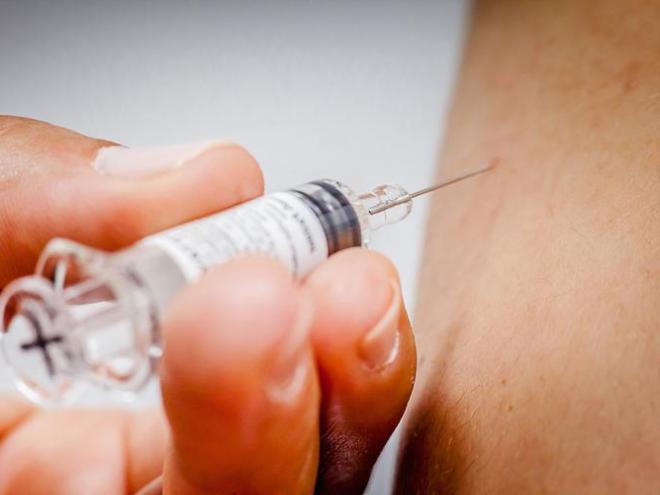
Some of the vaccines are complex; they are designed to protect the body from several infections at once (DTP). It is a mistake to believe that children who get sick often should not be vaccinated. On the contrary, vaccination will help them strengthen their immunity.
Why are adults vaccinated under the shoulder blade?
Adult patients are injected under the shoulder blade with drugs intended for revaccination against diphtheria and tetanus; adults are vaccinated once every 10 years as planned.
You can urgently get vaccinated against tick-borne encephalitis (usually outbreaks of the disease are recorded in mid-May).
Patients over 55 years of age may be offered a vaccine against shingles (a type of herpes) under the shoulder blade.
Vaccination
The injection technique under the scapula requires the use of needles of the smallest diameter and insertion of the tip to a depth of 15 mm to inject the drug in a volume of no more than 2 ml. It is recommended to perform a subcutaneous injection in the following places:
- outer surface of the shoulder;
- subscapular space;
- lower part of the axillary region;
- surface of the thigh in the anterior outer region;
- lateral surface of the abdominal wall.
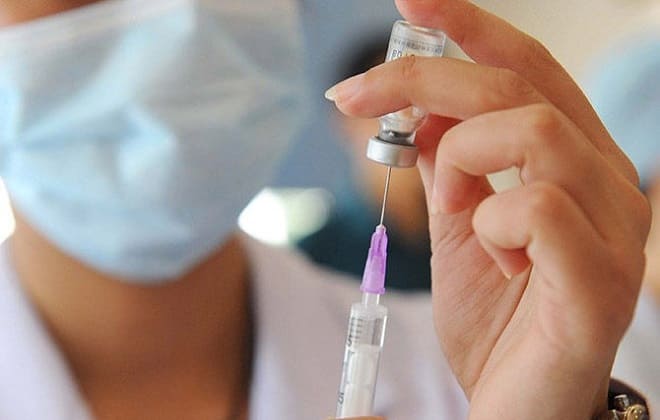
It is not recommended to vaccinate under the shoulder blades of adults with existing swelling of the subcutaneous fat, as well as with lumps from insufficiently absorbed previous injections.
How to prepare
It is believed that a healthy child or adult does not need any preparation for vaccination.
But in order to avoid unwanted complications, before vaccination under the shoulder blade at the age of 14, children are examined by a pediatrician, who also surveys parents about the presence of allergic reactions and chronic diseases.
Adult patients are examined by a therapist. What do you think are the most important factors when choosing a medical facility?

Based on the results of the examination, the doctor allows vaccination or does not allow an injection. If the patient has recently suffered a dangerous disease, he may be prescribed additional tests or vaccination may be delayed.
Why exactly under the shoulder blade?
The graft is placed under the scapula due to the fact that in the subscapular region the skin can be easily captured in a fold, eliminating the risk of damage to blood vessels, nerves or periosteum.

The vaccination is done under the shoulder blade also because the risk of local adverse reactions with subcutaneous administration of the vaccine is much lower compared to intramuscular administration of the drug. This is due to the fact that the active substance injected under the shoulder blade gradually dissolves in the blood and the body has time to form a natural protective reaction.
Does it hurt to do
Grafting into the subscapular space is considered the most painful. But, despite the pain, the described method of administering the vaccine is considered highly effective, because When the vaccine is administered under the shoulder blade, the active ingredients are absorbed extremely quickly.
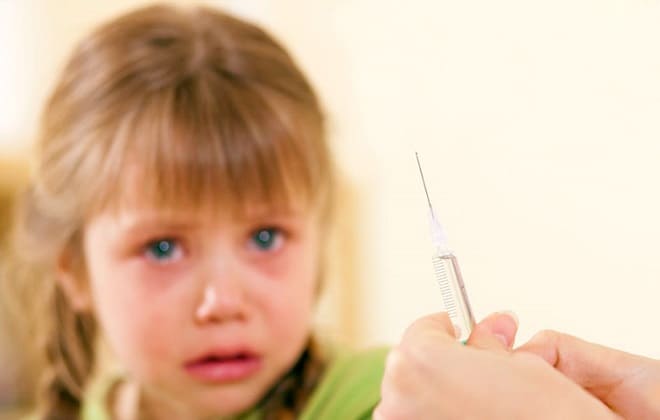
The vaccination also has a positive effect from the fact that in the subscapular space, most patients have a very small layer of subcutaneous fat.
Indications and contraindications
The main indication for vaccination is the prevention of the spread of infectious diseases, as well as immunization of the country's population.
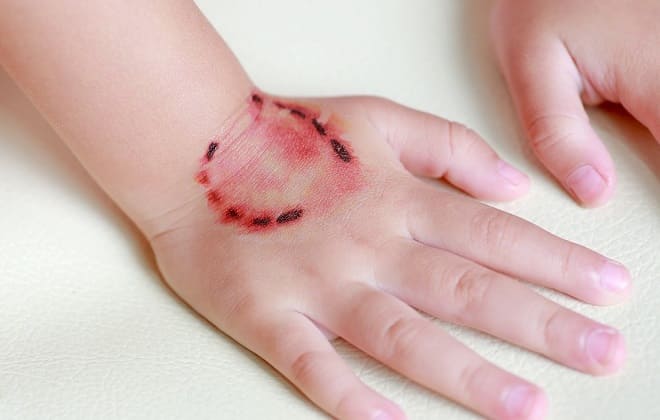
Additional and emergency indications for vaccination against tetanus include wounds, cuts, animal bites, and immunoprophylaxis before surgery in the absence of information about the patient’s vaccinations.
An additional indication for vaccination against tick-borne encephalitis is visiting or living in endemic areas.
Contraindications for injections under the shoulder blade:
- individual intolerance to the components of the composition;
- allergy to chicken protein (strains grown in chicken protein);
- exacerbation of chronic diseases;
- acute infectious diseases and acute respiratory infections;
- fever.
Why is the vaccine placed under the shoulder blade?
There are several reasons for administering drugs under the shoulder blade:
- the product is quickly distributed, since in this place the layer of subcutaneous fat is minimal;
- lower risk of complications typical for intramuscular injections;
- the substance enters the blood gradually.
The last reason is the most important because this is how live vaccines are administered. If they enter the blood quickly, the immune system will instantly destroy them, and immunity will not have time to form. When an injection is given under the shoulder blade, the drug gradually penetrates into the blood, allowing the necessary antibodies to be produced.
Is there an alternative option for administering the vaccine?
There is a backup option. It is necessary in cases where the child does not have enough muscle mass, as well as when the patient is too young (up to a year). Then the vaccines are injected into the thigh or shoulder.
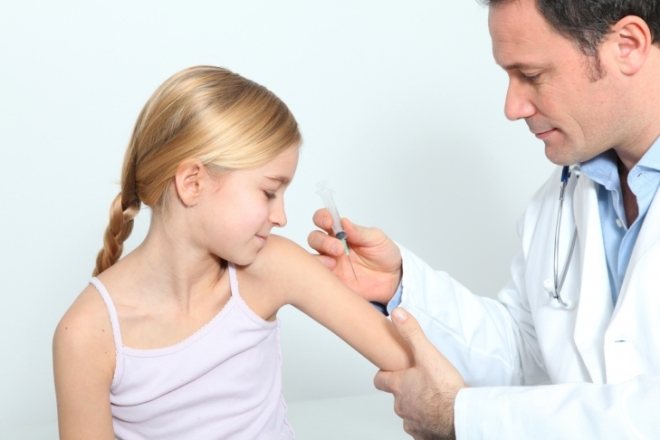
Indications and contraindications for vaccination
Vaccinations under the shoulder blade are intended primarily to prevent serious infections. This is their first and main indication.
Urgent tetanus vaccination is indicated if the patient:
- damaged skin as a result of a cut, burn or injury;
- an animal bite was detected;
- There are no data on vaccinations before surgery.
The flu vaccine is indicated from six months of age. It is especially recommended if the patient is at risk, namely:
- age (over 60 years);
- often suffers from bronchopulmonary diseases or is diagnosed with bronchial asthma;
- suffers from diseases of the endocrine and cardiovascular systems;
- with chronic kidney failure;
- with weakened immunity, when taking immunosuppressants, cytostatics.
Vaccination against encephalitis, which is carried by ticks, is recommended for persons living in areas with a high risk of infection, or when planning a trip to such places.
Vaccinations are especially important for adolescents, since at the age of 14-15 the effect of many previously administered vaccines expires. Children at this age are at risk of developing drug addiction. At the same time, many young people begin to be sexually active. All this can lead to infection, first of all, with hepatitis B. Vaccination under the shoulder blade at the age of 14 will help to avoid unpleasant consequences.
Drugs administered under the shoulder blade have individual and general contraindications. The latter include:
- individual intolerance to the components of the product;
- allergy to chicken protein;
- chronic disease in the acute stage;
- acute infection, acute respiratory infection;
- fever.
You will have to refuse DPT if, after the previous injection, the following were observed:
- convulsions (within three days after injection);
- swelling at the injection site with a diameter of more than 8 centimeters;
- unexpected drop in blood pressure;
- continuous crying (more than three hours) for two days after vaccination.
Live vaccines (BCG, MMR, polio) are contraindicated:
- pregnant women;
- patients with immunodeficiency;
- patients with oncology.
Indications and possible contraindications
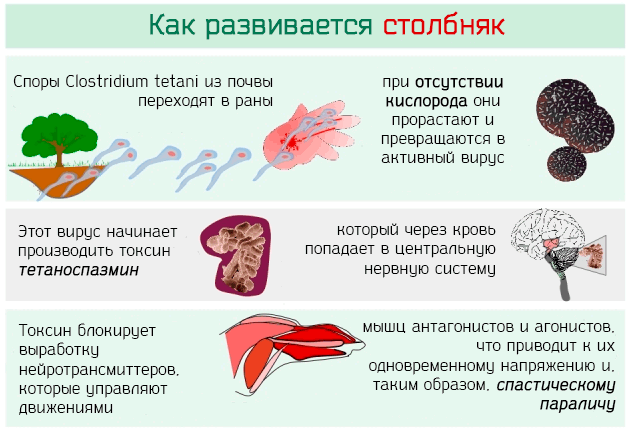
The main indication for any vaccination is the prevention of severe, deadly infections. An exception is an urgent injection for tetanus, which can be given to a child at 14 years old:
- when bitten by a wild animal;
- for large-scale burns, wounds and cuts;
- in the absence of data on vaccinations before surgery.
An annual updated vaccination, including an injection under the shoulder blade at 14 years of age, is considered to be vaccination against encephalitis, which is carried by ticks. All people living in high-risk areas are vaccinated, as well as when planning long-term residence in such areas.
Of greater importance are updated vaccinations, the time for which begins at the age of 14-15 years. The most urgent injection is considered to be vaccination against hepatitis B, the risk of contracting it increases at this age.
Contraindications that deserve special attention:
- exacerbation of chronic diseases, as well as infections and acute respiratory infections;
- feverish conditions;
- allergy to chicken protein;
- intolerance to other ingredients in vaccinations.
Some vaccinations have specific contraindications. This usually applies to injections that are difficult to tolerate by the body.
Live vaccines, which include BCG, MMR and polio, cannot be given for cancer, immunodeficiency and during pregnancy. DPT is prohibited for convulsions, low blood pressure, swelling of more than 8 cm, and constant crying in children after the procedure.
How to prepare for vaccination
To prepare for the procedure, you should first find out what you will be vaccinated against and what vaccine will be used.
Young patients must be examined by a pediatrician. Parents should disclose any allergies or chronic illnesses. Adults also visit a general practitioner. Only after an examination does a specialist give permission for vaccination or prohibit it. For patients who have recently had an illness, the doctor will send them for additional examination, including tests.
If there is a suspicion of neurological diseases, you will have to contact a neurologist. The specialist will give an opinion on whether vaccination can be carried out or whether it is better to postpone the procedure.
For immunization to go smoothly, you should not:
- visit crowded places before and after the procedure; if your baby is being vaccinated, it is recommended not to keep him in line to avoid unnecessary contact with sick children;
- before the upcoming vaccination, try new, unknown and unusual foods; this will be an additional test for the immune system;
- swim in a pool or open water to prevent germs from getting into the wound; You can wash.
Vaccination technique
An algorithm for carrying out the procedure was developed especially for medical office workers performing the vaccination procedure. It must not be violated, otherwise the effect will not be achieved. Failure to follow the rules may lead to undesirable consequences. The injection should be done like this.
- Wash your hands with soap, put on and disinfect gloves.
- Using an alcohol wipe, wipe the ampoule containing the drug, open it, fill the syringe with the contents, releasing excess air.
- Treat the injection site twice with alcohol wipes.
- Take the syringe by placing your index finger on the needle cannula, your little finger on the piston, and the rest should hold the syringe barrel.
- Grab the skin roll and quickly and confidently insert a needle into its base from bottom to top at an angle of 45 degrees to the surface of the back, while a third of the needle should remain outside.
- Release the grip and inject the contents of the syringe, gently pressing the plunger.
- Remove the syringe, holding the needle cannula, pressing the alcohol pad to the injection site.
- Without removing the napkin, perform a light acupressure massage of the skin, helping the product to distribute evenly.
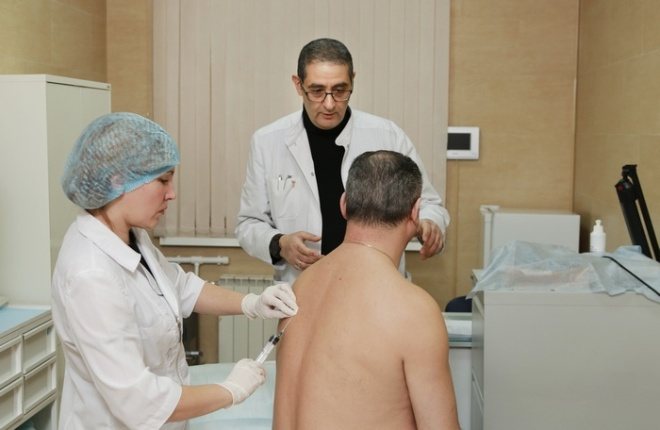
After administering the vaccine, the health worker must fill out the appropriate documentation - make notes in the journal and the vaccination certificate.
Does it hurt to get vaccinated?
Unlike other areas where injections are given (hip or shoulder), the subscapular region has weak innervation and blood supply. A professional procedure ensures painlessness and low blood loss.
Pain may arise not from the injection, but from a reaction to the drug, as well as in the case of prolonged presence of the injected substance in the tissues.
A painful reaction occurs due to:
- active components of the vaccine - they force the immune system to resist them, so inflammation is possible;
- excipients that hold the drug at the injection site to ensure the desired immune response;
- violations of the injection algorithm.
Injection technique
The vaccination site is treated with alcohol for disinfection.
An injection is placed under the shoulder blade with a small syringe with a short needle, insertion depth is no more than 15 mm. About 2 ml of the drug is administered at a time, almost never more. Injection technique:
- Hands are washed with soap and disposable disinfected gloves are used.
- Each ampoule with the drug is washed with an alcohol wipe and opened according to the instructions.
- The contents are drawn into a disposable syringe and the air is released.
- Use a cotton swab or alcohol wipe to treat the injection area.
- The syringe is taken so that the index finger is at the end of the needle and the little finger is on the piston.
- The remaining fingers hold the body of the syringe. Grasp the skin roll with the other hand and confidently insert the needle from bottom to top, maintaining an angle of 45 degrees to the surface of the back. A third of the needle remains unintroduced.
- The skin roll is released and the contents are injected by pressing the piston slowly and carefully.
- While holding the needle, remove the syringe and immediately treat the wound with an alcohol wipe. By pressing it to the skin, they perform acupressure to quickly distribute the product.
Immediately after the injection, the doctor or nurse enters the data into the school's vaccination register.
Feelings when injected
There are few vessels and nerves in the scapular area, so injections are usually painless, especially when the injection is performed by an experienced specialist. Most often, pain does not appear at the time of administration of the medicine, but during the process of its absorption by the body.
Pain in the injection area occurs due to the activation of the immune system, which resists the injected components. In rare cases, unpleasant symptoms may appear due to non-compliance with the technology for administering the drug.
Normal body reaction to vaccination
The drug enters the body, the immune system recognizes the “enemy” and begins to fight it. In the process of this struggle, negative manifestations of a general or local nature are possible.
General reactions:
- weakness and malaise appear;
- the temperature rises.

Local reactions:
- swelling;
- redness.
Patients often complain of back pain after vaccination. Sometimes bumps appear at the injection site. Such seals should be lubricated with ointments that have a resolving effect, and compresses should be placed on them.
All these reactions indicate that the body is suppressing the introduced antigen. Such manifestations are normal for three days. If after this time they do not go away, you should immediately consult a doctor.
Possible side effects
Complications make themselves felt by the following symptoms:
- unbearable and continuous headache, insurmountable weakness - may signal meningitis or encephalitis;
- a sharp decrease in blood pressure, pallor after administration of the drug - shock syndromes;
- hives, redness, itching are signs of an allergy;
- convulsions, dizziness, fainting;
- difficulty breathing, pallor or blueness of the face are signs of angioedema.
If these signs appear, you should immediately seek qualified help.
How to relieve pain after grafting under the shoulder blade
The appearance of negative consequences should not be a reason for panic. Usually all symptoms disappear without a trace without any intervention. However, in some cases you can resort to the help of medications or folk remedies.
If you are concerned about local reactions in the form of lumps, you can consult your doctor about what ointment to use.
Vaccination is stressful for the body. To improve your condition and relax, you are allowed to take a bath.
Very rarely, dizziness occurs after vaccination under the shoulder blade. The best remedy against it is sleep and rest. When your head hurts badly, a compress on your forehead will help.
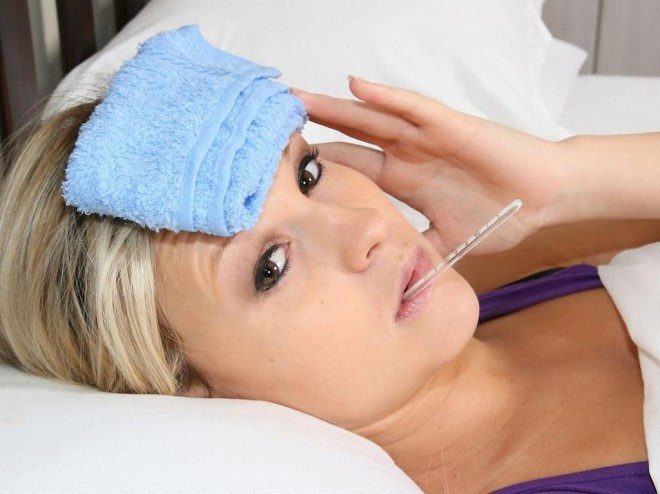
If the patient has digestive disorders, namely vomiting or diarrhea, the amount of fluid consumed should be strictly controlled to prevent dehydration.
Taking painkillers
You can resort to painkillers such as Nurofen or Ibuprofen when the patient has severe back pain, fever, or severe headache.
How to apply a compress to the injection site
The appearance of a lump at the injection site is an unpleasant phenomenon. Ointments, for example, Troxevasin, will help fight it. Thanks to their action, the seal gradually dissolves.
In serious cases, it is better to make compresses:
- magnesia - soak a gauze pad with the solution, apply to the bump, fix;
- aspirin + alcohol – dilute one aspirin tablet with two tablespoons of alcohol, apply to the seal, pre-treated with natural oil of plant origin.
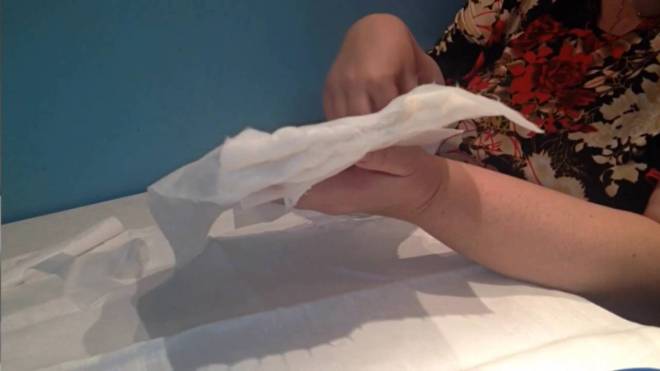
Similar procedures are carried out daily or every other day. Usually two to four times is enough.
Vaccination under the shoulder blade: why the injection site is swollen, and what to do about it
Subcutaneous administration of vaccines has one significant drawback - local reactions occur very often. However, with an injection under the shoulder blade, the risk of their occurrence is still lower than with injections in other areas.
But things don't always go smoothly. Patients are upset when a lump appears at the injection site that does not dissolve for a long time, and the injection under the shoulder blade hurts. This is a possible reaction and is considered normal. Still, everyone wants to get rid of the discomfort brought by a lump. There are recommendations for this case:
- iodine mesh and various ointments will speed up the resorption of the resulting compaction;
- folk remedies - cabbage leaves, honey-rye cakes - remain effective for a long time;
- A lotion with Novocaine or magnesia (25% solution of magnesium sulfate) will help relieve severe pain.
If the lump is large, does not go away after compresses, pus appears, self-treatment will not help. You need to urgently contact specialists. Surgery may be needed. Using local anesthesia, the doctor will remove the purulent contents, disinfect the wound, and prescribe medications to eliminate inflammatory processes.
Recently, many people are refusing vaccinations after reading information about complications on the Internet. Such refusals flow into the real “anti-vaccine movement.” Of course, everyone decides for themselves whether they need vaccinations or not. It is important to remember that vaccination is a serious measure that over the years has saved hundreds of thousands of human lives from fatal diseases. Injecting drugs under the shoulder blade is one way to make the immunization procedure less painful while maintaining its effectiveness. To avoid complications, you should listen to the advice of doctors and follow the rules of immunization. Then preventive measures will only be beneficial, will become the basis for the formation of strong immunity and will help maintain health for many years.
Vaccination under the shoulder blade at 14 years old: pros and cons
At the age of 14, adolescents are re-vaccinated against many diseases. Schoolchildren are offered the injection right at school. To do this, parents need to write consent for vaccinations. If a medical tap is taken, then the injection for children can be done free of charge at any clinic. We will consider in more detail which vaccinations at 14 years of age must be given according to the medical calendar.
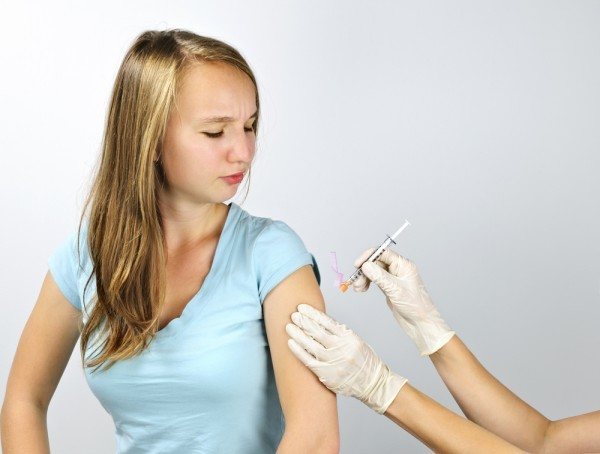
Why is it important to vaccinate schoolchildren?
Adolescent children, from 13 to 15 years old, are at risk for a number of factors:
- According to statistics, in 2014, children’s sexual activity begins at the age of 14–15 years.
- Adolescents 14 years old are at risk for drug addiction.
- The effect of many vaccinations given at an early age ends at 13–15 years of age and revaccination is necessary.
Important vaccinations included in the schedule for adolescent children include hepatitis B, tuberculosis, rubella and mumps. Of the optional ones, seasonal ones are distinguished from influenza and encephalitis.
More than 10,000 people die every day from the tuberculosis bacillus. More than 15 million people become infected every year, and 1/5 of cases are fatal. You can protect your teenager by getting the BCG vaccine. The first injection is given in the maternity hospital, and revaccination is carried out in adolescence.
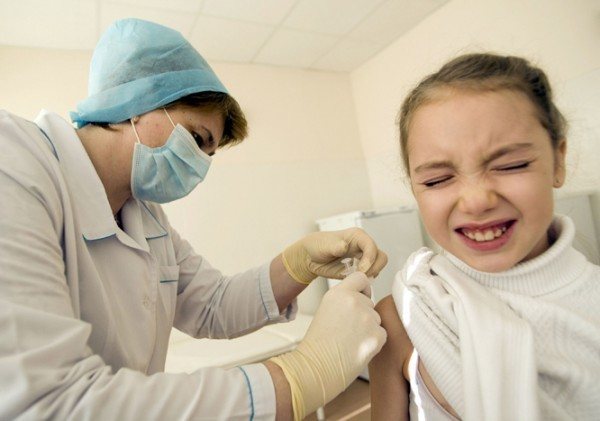
Mumps, or mumps, is spread through the air. There are known cases when entire classes were closed in schools for quarantine. Mumps is scary for teenage boys, as the consequences threaten infertility.
Rubella is dangerous for girls. If a pregnant woman becomes infected with rubella, this will lead to intrauterine death or the birth of children with abnormalities. You need to take care of vaccination at the age of 14, to form a strong immunity in advance.
Both sexes of adolescents need to be protected from influenza. The virus mutates every time, and even if a child is vaccinated against another form of influenza, the disease will be easier and will not turn into pneumonia.

